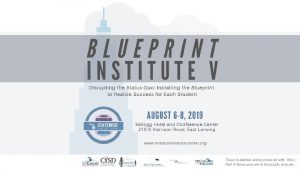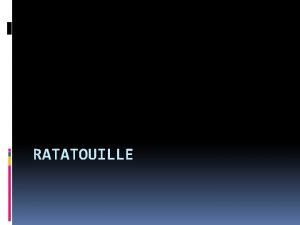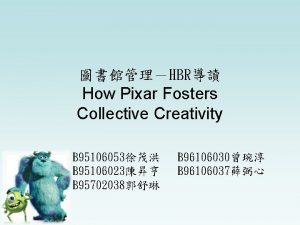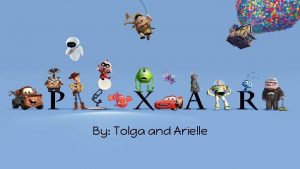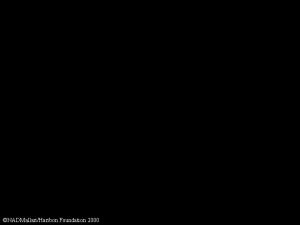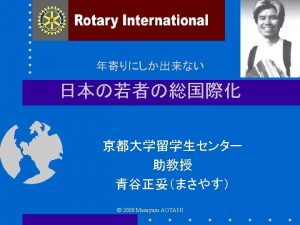The history of Pixar From 1979 2000 1979






- Slides: 6

The history of Pixar From 1979 -2000

1979 George Lucas recruits Ed Catmull from the New York Institute of Technology to head Lucasfilm’s Computer Division, a group charged with developing state-of-the-art computer technology for the film industry. Lucas’s wish list: a digital (nonlinear) film editing system, a digital (nonlinear) sound editing system, a laser film printer, and further exploration of computer graphics. 1982 The Computer Division completes the “Genesis Effect” sequence for Star Trek II: The Wrath of Khan. The scene, which shows an initially lifeless planet being rapidly transformed by lush vegetation, is the first completely computer animated sequence in a feature film. 1983 The Computer Division’s Graphics Group creates their first film-resolution image, “The Road to Point Reyes. ” Near the end of the year, animator John Lasseter is invited to come up to the Bay Area to do some freelance work with the Graphics Group.

1984 Lasseter is hired full-time, joining the Computer Division as an “Interface Designer. ” A partially completed version of “The Adventures of André & Wally B. ” premieres at SIGGRAPH. It is the first short film created by the future animation studio, featuring complex flexible characters, hand-painted textures, and motion blur. It is also the first example of character animation in the young medium of computer animation. At SIGGRAPH, the Computer Division also shows off its prototype Pixar Image Computer. 1985 The Computer Division completes the Stained Glass Knight sequence that appears in the film Young Sherlock Holmes. 1986 Steve Jobs purchases the Computer Division from George Lucas and establishes the group as an independent company, “Pixar. ” At this time about 40 people are employed. Pixar and Disney begin collaboration on CAPS, the Computer Animation Production System, which would revolutionize the creation of traditional animated films. The first check written to Pixar by a client after its incorporation is from Disney, for work on this project.

1988 Pixar’s proprietary animation system, identified to the outside world as Marionette but internally known as Menv (“men-vee”), short for “modeling environment, ” comes online. Pixar’s proprietary renderer, Render. Man®, also makes its internal debut. Both pieces of software used to produce “Tin Toy, ” Pixar’s third short film. A partially completed version of “Tin Toy” is screened at SIGGRAPH, with the finished film premiering later that year at the Ottawa International Film Fest. “Tin Toy” will go on to become the first computer animated film to receive an Academy Award® when it is named Best Short Film (Animated) the following year. 1989 “Knick Knack” is completed. A work-in-progress version is screened at that year’s SIGGRAPH. It is Pixar’s first animation produced in stereoscopic 3 D. The first commercial version of Render. Man® is released. Pixar begins making commercials. The first is an ad for Tropicana orange juice, “Wake Up, ” directed by John Lasseter. 1990 Andrew Stanton and Pete Docter join the company. By the end of the year, each animates a commercial – Andrew Stanton completes “Quite A Package” for Trident, and Pete Docter animates “Boxer” for Listerine. Pixar’s commercial work gives the company invaluable experience in pitching, storytelling, and working with clients, and allows it to develop and refine its production pipeline.

1991 Disney and Pixar announce an agreement “to make and distribute at least one computergenerated animated movie. ” Pixar begins work on the project that will become Toy Story, while continuing to produce commercials and other short materials, including spots for public television. 1995 Toy Story, the world’s first computer animated feature film, is released in theaters on November 22. It opens at #1 that weekend and will go on to become the highest grossing film of the year, making $192 million domestically and $362 million worldwide. Pixar’s initial public offering takes place just days later, on November 28. It is the largest IPO of the year. 1996 Toy Story is recognized with Academy Award® nominations for Best Original Song, Best Original Score, and Best Original Screenplay—the first time an animated film is recognized for screenwriting. John Lasseter receives a Special Achievement Oscar® from the Academy of Motion Picture Arts and Sciences for his “inspired leadership of the Pixar Toy Story Team resulting in the first feature-length computer animated film. ”

1997 The Walt Disney Studios and Pixar Animation Studios announce an agreement to jointly produce five movies over 10 years. 1998 Groundbreaking for Pixar’s Emeryville studio begins. 1999 Toy Story 2 is released in theaters on November 24. It is the first film in history to be entirely created, mastered and exhibited digitally. It is accompanied by a rerelease of “Luxo Jr. ” 2000 Pixar moves to its new building in Emeryville, California.
